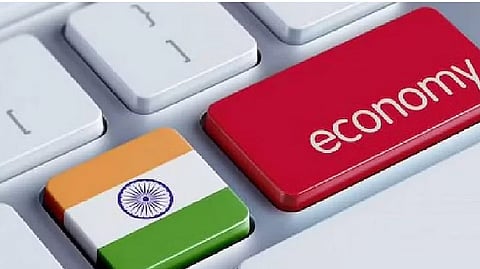

If you pay attention to government economists, business channels and corporate communications specialists, it might seem like Indians are splurging cash like never before — and therefore the economy is doing great. Aren’t we the fastest growing economy in the world, after all? The evidence offered is breathtaking: Last month, Italian luxury car-maker Lamborghini achieved its annual India sales target in just the first two months of 2023. Another British supercar maker McLaren’s LT Spider 65 model (Rs 12 crore ex showroom) has been lapped up by a Hyderabad man who collects luxury cars like stamps.
We have a welter of gush tales from other sectors. A storied Michelin-starred chef is conducting a residency in New Delhi, pricing his signature meal at Rs 50,000 per head and is sold out till April. Two weeks ago, HNI buyers queued up at a premium developer’s office in Gurugram and booked his entire inventory of 500 flats in three days. High-end hotels are booked to full capacity, luxury watch sales are up 35% and so on. The headlines serve—or indeed are designed—to hide the real story: The news is good at the high end of the market, and poor at the low. The fine print tells what is a global story: COVID was a friend of the rich and an enemy of the poor.
Auto industry figures released last week show that sales of passenger vehicles were the highest ever for February. But two- and three-wheeler sales are yet to recover to even pre-COVID levels. Similarly, NielsenIQ figures for the FMCG industry for the last quarter grew 7.6 percent by value but declined 0.3 percent by volume, meaning that Indians are buying less at higher prices. This picture is masked from urban India because FMCG consumption in rural markets actually declined 2.8 percent compared to growth of 1.6 per cent in urban markets.
In real estate, a sector that is celebrating a bumper year in more than a decade, overall sales last year breached the previous peak of 2014. But the bump was due to buying in the premium segment, while the affordable segment stalled. According to one report, the share of budget housing in total sales declined from 57 per cent in 2019 to 28 per cent in 2022.
Signs of lop-sided post-COVID recovery are everywhere. Life insurance firms have reported a 31 per cent drop in new premium collections in February, the busiest month for the trade. No less than 10,000 MSMEs have shut down so far in the current fiscal year, more than the aggregate shutdowns in six years prior. The number of individuals in the Rs 0-5 lakh income tax bracket has fallen 17 per cent since the pandemic year, while the number of those in the above Rs 10 lakh bracket has risen 66 per cent. Yet, gross direct tax collections were up 24 per cent up to January 2023.
Per Oxfam, the number of Indian billionaires went up from 102 in 2020 to 166 in 2022. Seven of the new billionaires are from the pharma industry, a fact that underscores the impact COVID has had on the fortunes of industry moguls. And if one considers the underwear index, a yardstick used by Alan Greenspan to assess the health of an economy, Indians are buying less innerwear. All of India’s major innerwear companies reported loss of volumes in the latest quarter — a fact that leaves the government with little more than a fig leaf to cover itself with.
Visit news.dtnext.in to explore our interactive epaper!
Download the DT Next app for more exciting features!
Click here for iOS
Click here for Android